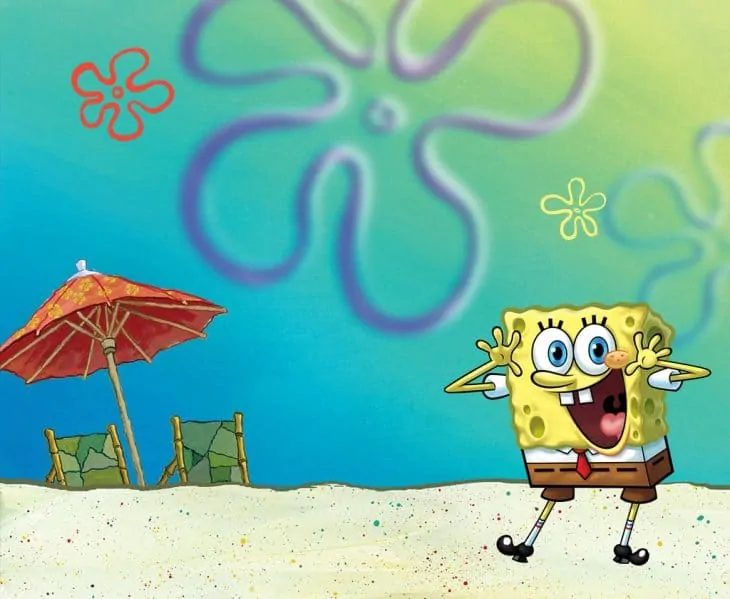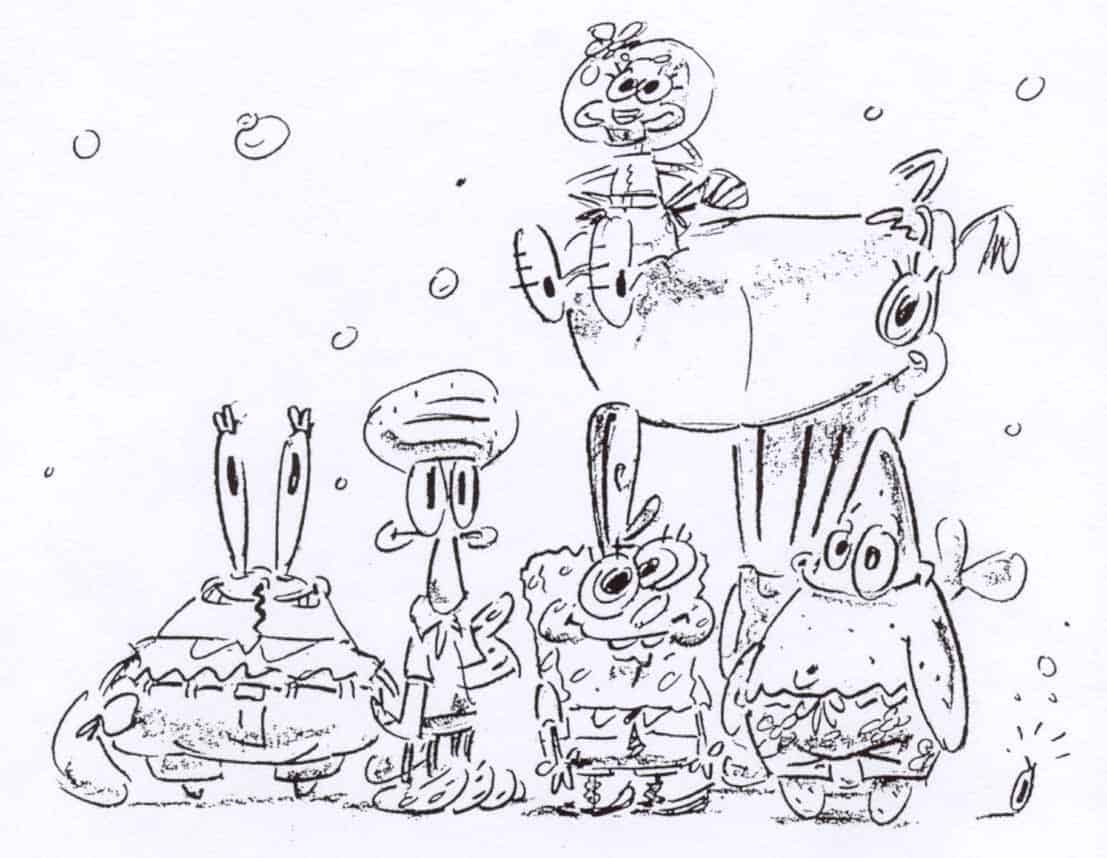
For generations, people have grown up with their favorite cartoon characters. Of all these characters, SpongeBob SquarePants has been one of the faces of entertainment for nearly decades now. Even 12 seasons down the line, the residents of Bikini Bottom continue to capture the hearts of many as part of Nickelodeon’s longest-running animated series. While you may be familiar with the show, there’s still a lot you don’t know about its bubbly yellow sponge. Get to know him and his show a little more with these SpongeBob SquarePants facts.
- The show had its official Nickelodeon premiere on July 17, 1999.
- Around 25% of the show’s viewers are adults with no kids.
- The show currently has 12 seasons.
- In its 12 seasons, the show has a total of 262 episodes.
- SpongeBob’s birthday is July 14, 1986.
- SpongeBob Squarepants is a yellow sea sponge.
- He lives in a submerged pineapple.
- SpongeBob SquarePants is Nickelodeon’s highest-rated series.
- SpongeBob has various hobbies, including jellyfishing (catching jellyfish with butterfly nets), blowing bubbles, and practicing karate with Sandy Cheeks.
- Voice actor Patrick Pinney performed the show’s opening theme and voices Painty the Pirate.
- Before its official Nickelodeon premiere, the show’s preview first aired on May 1, 1999.
- The 2004 film The SpongeBob SquarePants Movie grossed over $140 million worldwide.
- The series received a renewal for its thirteenth season on July 17, 2019.
- SpongeBob SquarePants ranks fifth among the longest-running animated series on American television.
- Rough Draft Studios, based in South Korea, produces the show’s finished animations.
- The creator of SpongeBob SquarePants explains that his laugh takes inspiration from a dolphin’s calls to remind viewers of the ocean.
- Plankton, the main series villain and nemesis of Mr. Krabs, is a copepod.
- SpongeBob SquarePants is Barack Obama’s favorite cartoon character.
- Flowers act as clouds in the show’s background, taking inspiration from the prints of typical Hawaiian shirts.
- The franchise generated a merchandising revenue of $13 billion as of late 2017.
SpongeBob SquarePants Facts Infographics

SpongeBob SquarePants initially had the name SpongeBoy.
During the show’s early development in 1994, SpongeBob SquarePants had the name “SpongeBoy” with no known last name. The show would initially have the title, SpongeBoy Ahoy!. However, a mop product had already trademarked the name, so they had to change the name of both the character and the show.

The show’s creator studied marine biology.
Given the subject of the show, it may come as no surprise that Stephen Hillenburg, creator of the SpongeBob SquarePants series and its characters, studied as a marine science major with a minor in art. As he grew up, Hillenburg developed a fascination for the ocean and a passion for drawing, which makes the show a perfect mix of both. In 1984, he finished a bachelor’s degree in natural-resource planning emphasizing on marine resources at Humboldt State University in Arcata, California.
Aside from drawing, Stephen Hillenburg also loved teaching and worked as an educator at the Ocean Institute – formerly known as the Orange County Marine Institute – in California.
Much like SpongeBob, Stephen Hillenburg once worked as a fry cook.
In the animated series, SpongeBob works as a fry cook at the Krusty Krab, an underwater restaurant run by Mr. Eugene Krabs. Surprisingly, the show’s creator also had first-hand experience of working as a fry cook. A few summers after graduating from high school, Stephen Hillenburg worked as a fry cook and a lobster boiler at a restaurant in Maine.
The characters of the show were based on Stephen Hillenburg’s unpublished comic book.
During his time in the Ocean Institute, one of the educational directors gave Stephen Hillenburg the opportunity to make an educational comic book about tidal pools and their inhabitants. Taking the offer, Hillenburg went on to write and illustrate The Intertidal Zone in 1984. This comic book featured anthropomorphic sea animals, many of which went to become characters in his future series.
One notable character in The Intertidal Zone was Bob the Sponge, one of the book’s co-hosts. As Hillenburg’s favorite animal, Bob the Sponge was a sea sponge that became an early inspiration for SpongeBob’s character. Unlike SpongeBob’s kitchen sponge shape, Bob the Sponge resembled a circular sea sponge. Hillenburg attempted to get the book published, but publishers ultimately rejected it.
Later on, Hillenburg enrolled at the California Institute of the Arts, pursuing its Animation Program in 1898. After earning a Master of Fine Arts in experimental animation, Hillenburg’s animation career began. Eventually, Hillenburg became a director for Rocko’s Modern Life, developing the SpongeBob SquarePants series after its cancellation.
Bikini Bottom takes inspiration from a real place.
The series is mostly set in Bikini Bottom, the undersea city where SpongeBob lives. This fictitious place takes inspiration from the real-life location of Bikini Atoll, a coral reef in the Pacific Ocean.
Formerly a nuclear test site of the United States, you won’t find anyone in Bikini Atoll aside from fish and other sea creatures. The location even inspired fan theories that the characters of the show are actually the result of nuclear testing.
Stephen Hillenburg created Mr. Krabs after his former manager.
SpongeBob’s penny-pinching boss at the Krusty Krab takes after a specific person in Stephen Hillenburg’s life. Hillenburg designed Mr. Krabs’ character after his former manager at the seafood restaurant he worked in. He explained that the manager was red-headed and muscular former army cook.
The restaurant owner also spoke with a strong Maine accent, which reminded Hillenburg of a pirate. Hillenburg thus incorporated these traits into SpongeBob’s employer, Eugene Krabs. Although Mr. Krabs is notoriously fixated on money, Hillenburg explained that he just added this trait to give Mr. Krabs a more distinctive personality.
SpongeBob SquarePants and Patchy the Pirate share the same actor.
Some episodes of SpongeBob SquarePants feature a live-action host named Patchy the Pirate. Astonishingly, the actor who plays Patchy the Pirate is also the same person who voices SpongeBob. As different as the characters are, they’re both played by renowned voice actor Tom Kenny.
Throughout the show’s seasons, Tom Kenny won numerous awards, including the 2010 Annie Award for Best Voice Acting in an Animated Television Production and two Daytime Emmy Awards. He also famously voiced Dog in CatDog, The Narrator and The Mayor in PowerPuff Girls, and Ice King in Adventure Time. Interestingly enough, Tom Kenny is married to Jill Talley, who voices Plankton’s computer wife Karen in SpongeBob SquarePants.
They had to record Tom Kenny lying on the floor in one episode.
During the recording of the second season episode Sailor Mouth, the cast had to improvise swear words. When they couldn’t successfully fake swearing, they had to actually say profanity, which the editors would censor with dolphin sounds. While recording for this episode, Tom Kenny laughed so hard that the staff had to record him as he lay on the floor.
The Krabby Patty is vegetarian.
Plankton mostly has his mind set on one thing: acquiring the Krabby Patty’s secret formula. The Krabby Patty is the signature food item of the Krusty Krab, with its success due to Mr. Krabs’ top-secret ingredients.
The show never reveals the best-selling burger patty’s recipe. Some fans theorize that the Krabby Patty involves the use of crab meat because of its name and the fact that the Krusty Krab’s building looks like a crab trap. However, Stephen Hillenburg stated that the Krabby Patty is vegetarian and does not use any form of meat.
Researchers named a fungus after SpongeBob SquarePants.
In 2011, American mycologists Dennis E. Desjardin, Kabir Peay, and Thomas Bruns first discovered a fungus that Bruns collected in Lambir Hills National Park in Malaysia. The fungus specimens had a musty smell and sponge-like fruit bodies. Analysis revealed that the fungus belonged to the genus Spongiforma, which gave it the name Spongiforma squarepantsii, after SpongeBob SquarePants.The authors explained that the spongy fruit bodies of the fungus resembled SpongeBob’s own body, and that its spore-bearing surface reminded them of a seafloor covered with tube sponges.

Squidward is an octopus, not a squid.
Despite his name, SpongeBob’s ever-grumpy neighbor Squidward Tentacles is not. Squidward is actually an octopus, but he only has six limbs instead of eight. The designers chose to portray him as such since eight limbs would be too much to bear visually.
Several celebrities made guest appearances in SpongeBob SquarePants.
Various celebrities such as LeBron James, David Bowie, Will Ferrell, Tina Fey, Johnny Depp, David Hasselhoff, and Scarlett Johannson appeared as guests in SpongeBob episodes or films. Some of these celebrities agreed to make guest appearances because their kids watched the show, while some of them were big fans of SpongeBob themselves. Of all celebrities, Ernest Borgnine and Tim Conway made the most appearances in the series, giving voice to SpongeBob’s favorite superheroes, Mermaid Man and Barnacle Boy.
Although celebrities made guest appearances since the first season of SpongeBob, Stephen Hillenburg was not too keen on the idea. He wanted to avoid it as much as possible, explaining that the audience might compare it to another popular animated series, The Simpsons.
Hillenburg and his team went all out when they pitched the show.

After creating the idea for the show, Stephen Hillenburg and his crew had to pitch it to Nickelodeon for them to finance and air it. The crew had to convince the Nickelodeon executives that it was worth putting on television. Hillenburg and his team then decided to go all out on the show’s pitch. During the pitch, Hillenburg wore a Hawaiian shirt and a boom box for playing Hawaiian music. The crew also brought an underwater terrarium complete with models of the show’s characters.
The pitch was an astounding success. Two executives even had to leave the room during the pitch because they had to compose themselves after laughing too hard. Nickelodeon thus funded the team and gave them two weeks to write the pilot episode. After screening the pilot episode, Help Wanted, the Nickelodeon executives immediately wanted to see it again because of its unique humor.
The first movie used a 12-foot-tall replica of David Hasselhoff.
In the 2004 film The SpongeBob SquarePants Movie, David Hasselhoff appeared as himself and came to the rescue of SpongeBob and Patrick. The film crew had a larger-than-life replica of Hasselhoff built for visual effect, and it was roughly more than 12 feet (3.7 m) tall. This replica took up about $100,000 of the film’s budget, and David Hasselhoff later acquired it.
The song “Sweet Victory” rose to prominence because of the show.
The episode “Band Geeks” continues to be a popular episode, which many regard as the best episode in the series. It was in this episode where they featured the rock ballad “Sweet Victory” to create an elaborate finale scene. Before the well-acclaimed episode came into fruition, however, the Spongebob producers originally opted for royalty-free marching music. Finding the right marching tune proved to be a challenge, so they chose to use David Glen Eisley’s “Sweet Victory”.
They later released the song as part of the official series soundtrack album entitled “Spongebob SquarePants: The Yellow Album on November 15, 2005. This caused the track to skyrocket in popularity, shifting from relatively underground to selling over 300,000 copies on iTunes just a year after Nickelodeon aired the episode.
Patrick was originally intended to be an angry owner of a bar.
As the goofy and humorous best friend of SpongeBob, Patrick became a crowd favorite due to his endearing ignorance of the world. He is an overweight pink starfish, often getting into troublesome situations because he isn’t the sharpest tool in the shed. Before the conception of this well-loved character, however, Stephen Hillenburg created a starfish character who was a mean and angry bar owner. Hillenburg later developed his character closer to the actual nature of starfish—seemingly slow and dimwitted, but can be extremely active and quite aggressive.
One episode sparked political debates because of its depiction of unemployment.

SpongeBob’s story makes use of various themes while striving to avoid topical humor, but the episode entitled “Spongebob, You’re Fired” has sparked substantial controversies. The episode first appeared at the San Diego Comic-con International in 2013, and it showed that Mr. Krabs fired Spongebob from his job as a fry cook at the Krusty Krab. SpongeBob then faced the difficulties of unemployment as the story progressed, but various viewers expressed outrage at how the story was written.
The plot eventually became the subject of actual political debates, where institutions such as Media Matters for America postulated that various newsgroups used the show to shame poor people reliant on social services. Due to the issue, the episode attracted over 5.19 million viewers, which is by far the biggest audience viewership since 2011.
Kazakhstan’s education ministry deemed SpongeBob SquarePants “too violent for children”.
While most of the world enjoy SpongeBob and his friends’ crazy antics, other viewers beg to differ. This included representatives of Kazakhstan’s education ministry. According to the representatives, SpongeBob Squarepants is a show that corrupts the children, as it normalizes SpongeBob’s hooligan antics and often careless behaviors. They also believe that the titular character is a self-centered bully, who regularly and consciously inflicts harm towards his community in Bikini Bottom.
Ween’s album The Mollusk was one of the influences for SpongeBob’s creation.
With its colorful soundtrack, Spongebob Squarepants greatly draws influence from music. In particular, Ween’s album The Mollusk heavily influenced Stephen Hillenburg to create the series, with Hillenburg even contacting the band to inform them of that fact.
Since then, Ween has contributed songs for many Spongebob episodes and movies, including Loop de Loop in 2002. The 2004 film also featured Ocean Man, a song from the album The Mollusk, in the closing edits.
Nickelodeon initially wanted SpongeBob SquarePants to be a child who goes to school.
Initially, Nickelodeon wanted to make SpongeBob a child who goes to school, which was their target audience. However, this went against Hillenburg’s vision of the character. Hillenburg always envisioned SpongeBob as an adult with the imagination and innocence of a child, and he was adamant on that. In fact, he almost walked out on Nickelodeon for insisting that SpongeBob was an actual child who goes to school, until they reached a compromise. SpongeBob became an adult who goes to boating school.
Spongebob is now a well-loved character because of his cheerful, optimistic, and dynamic personality. Hillenburg revealed that he drew inspiration from his favorite childlike media figures. Hillenburg based Spongebob’s innocent and childlike personality on Charlie Chaplin, Jerry Lewis, and Pee-wee Herman among others.
Was this page helpful?
Our commitment to delivering trustworthy and engaging content is at the heart of what we do. Each fact on our site is contributed by real users like you, bringing a wealth of diverse insights and information. To ensure the highest standards of accuracy and reliability, our dedicated editors meticulously review each submission. This process guarantees that the facts we share are not only fascinating but also credible. Trust in our commitment to quality and authenticity as you explore and learn with us.
